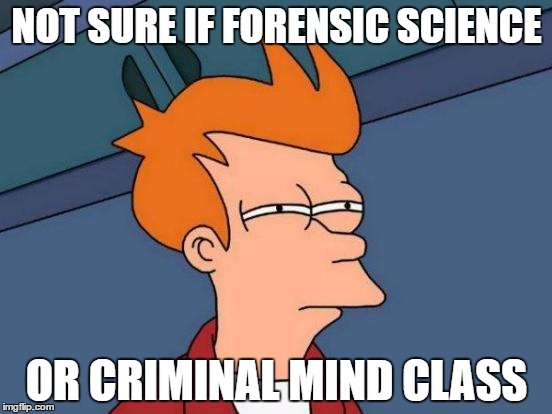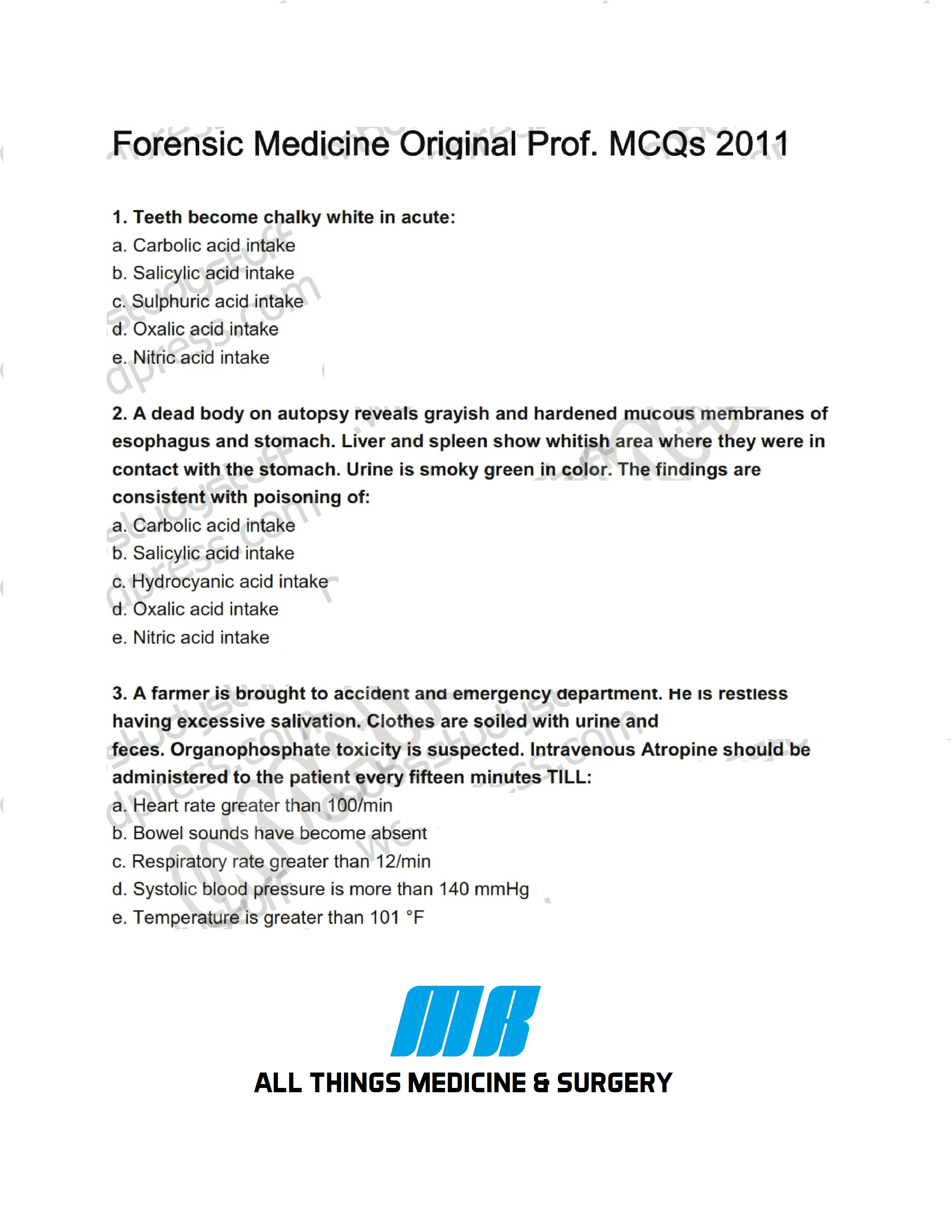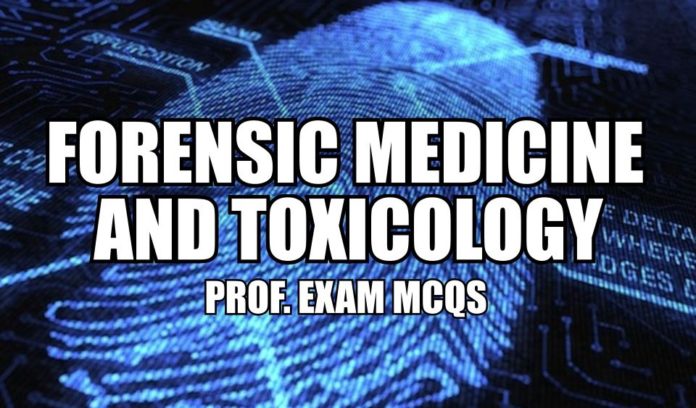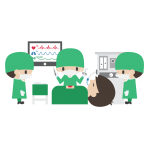This blog post contains MCQs of Forensic Medicine & Toxicology collected from 3rd Year MBBS Prof. Exams of various medical colleges. We hope you people will find it useful for your prof. exam preparation.
Please find the Forensic Medicine & Toxicology MCQs (with answer key) below after the jump. 🙂
Forensic Medicine & Toxicology — its funny side
Forensic Medicine & Toxicology of 3rd Year MBBS is quite an interesting subject for all the bad reasons one can imagine. 😀 It’s a subject which helps you explore the criminal mindset and ways you can master it. It basically teaches you crime tactics with great emphasis on how not to get caught! 😀

And for those interested in Crime Scene Investigation (CSI) and serial killers, Forensic Medicine and Toxicology serves as a dose for satisfying their obsession. It makes you think like the ACP Pradyuman (from CID, Sony TV):
“Kuch tu gadbad chal rahi hai!” 😀

Forensic Medicine & Toxicology MCQ Papers

CLICK HERE TO DOWNLOAD
Forensic Medicine & Toxicology MCQs
These Forensic Medicine & Toxicology MCQs have been collected from prof. exams. They are high-yield and are frequently tested in exams. We hope you’ll find them helpful for your exam preparation.
** For answers, please click here: Answer Key
1. Most common pattern fingerprint is
a. Whorls
b. Loops
c. Composite
d. Arches
2. pH of seminal fluid is
a. 6
b. 7
c. 7.4
d. 8.2
3. Poroscopy is
a. Counting pores of sweat glands only
b. Counting pores of both sweat and sebaceous glands
c. Counting number of ridges
d. Counting number of ridges and sweat glands
4. Tattoo marks destroyed, their presence can be inferred from presence of pigment in
a. Deep dermis
b. Subcutaneous tissue
c. Lymph nodes Regional
d. Underlying Muscle
5. Bluish discolouration of neck of tooth due to
a. Cyanosis
b. Bismuth
c. Copper
d. Nicotine
6. Suspected air embolism, body cavity to be opened first is
a. Brain
b. Thorax
c. Abdomen
d. Pelvis
7. “Under taker’s fracture” due to falling of head (Backward) occurs at
a. L5-S1
b. T12-L1
c. C6-C7
d. C1-C2
8. Most fixed part of intestine is
a. Duodenum
b. Jejunum
c. Colon
d. Ileum
9. After death blood usually remains fluid except in
a. Pneumonia
b. Septicemia
c. CO poisoning
d. Hypofibrinogenemia
10. “Nutmeg liver” refers to
a. Amoebic hepatitis
b. Pyogenic abscess
c. Chronic venous congestion
d. Portal cirrhosis
11. Child brain attains mature size and weight at about
a. 3 yrs
b. 5 yrs
c. 7 yrs
d. 9 yrs
12. Radiological signs of fetal death includes all except ?
a. Overlapping of skull bones (Spalding’s sign)
b. Hyperextension of spine
c. Collapse of spinal column
d. Gas in aorta
13. For transplantation cornea can be removed from dead upto
a. 6 hrs
b. 12 hrs
c. 18 hrs
d. 24 hrs
14. Exhumation done under order by
a. Police officer
b. Superintendent police
c. First class magistrate
15. Diagnosis of brain death dependent upon all except
a. Dilated/fixed pupil
b. No spontaneous breathing
c. Flat EEG
d. Cessation of cardiac contraction.
16. After stoppage of circulation muscles can live up to
a. 10 minutes
b. 30 minutes
c. 3 hours
d. 6 hours
17. Anoxic anoxia produced by all except
a. Drowning
b. Fire accidents
c. Cyanide poisoning
d. Strangulation
18. Tardieu spots in hanging are common at all the following sites except
a. Scalp
b. Eyebrow
c. Chest wall
d. Face
19. Tardieu’s spot
a. Septicemia
b. Endocarditis
c. Meningococcemia
d. All of the above
20. Earliest sign of death is
a. loss of skin elasticity
b. Corneal clouding
c. Cooling of body
d. Postmortem lividity
21. “Tache Noire” refers to
a. Postmortem staining
b. Flaccidity of eyeball
c. Wrinkled dusty sclera
d. Maggot growth
22. Rectal temperature does not appreciably fall till what time after death
a. 15-30 mts
b. 30-60 mts
c. 60-90 mts
d. none of the above
23. Postmortem caloricity seen in poisoning from
a. Arsenic
b. Strychnine
c. Cyanide
d. Organophosphorus
24. Postmortem lividity well developed with in
a. 2 hrs
b. 4 hrs
c. 6 hrs
d. 8 hrs
25. Fixation of postmortem staining occurs in
a. 2 hrs
b. 4 hrs
c. 6 hrs
d. 8 hrs
26. Rigor mortis starts when muscle ATP is reduced below
a. 50%
b. 5%
c. 15%
d. 5%
27. Rigor mortis first evident in
a. Intestine
b. Myocardium
c. Interstitial muscle
d. Eyelids
28. Cutis anserina of rigor mortis due to stiffness of
a. Erector pilorum
b. Biceps
c. Cremaster
d. Diaphragm
29. Rigor mortis does not occur in fetus less than
a. 9 mth
b. 7 mth
c. 6 mth
d. 8 mth
30. Commonest cause of impotence in male is
a. Adrenal dysfunction
b. Testicular failure
c. Mal developed penis
d. Psychogenic
31. Cadaveric spasm commonly seen in
a. Legs
b. Hands
c. Neck muscles
d. Involuntary muscles
32. Heat stiffening occurs when body exposed to temperature
a. 450C
b. 550C
c. 650C
d. 750C
33. Chief agent for bacterial putrefaction is
a. E.coli
b. B. fragilis
c. C.welchii
d. Staph aureus
34. Postmortem hemolysis due to bacterial enzyme
a. Lecithinase
b. Phospholipase
c. Streptokinase
d. Hyaluronidase
35. First external sign of putrefaction of body lying in air is around
a. Umbilicus
b. Rt iliac fossa
c. Lt iliac fossa
d. Chest wall
36. Greenish color earliest sign of putrefaction due to
a. Hb
b. Meta Hb
c. SulphmetHb
d. CarboxyHb
37. Combustible gas of autolysis is
a. Nitrogen dioxide
b. Hydrogen sulphide
c. Methane
d. Carbon dioxide
38. Postmortem luminescence due to
a. Photobacterium fischeri
b. Armillaria mellea
39. First internal organ to putrefy is
a. Heart
b. Brain
c. Larynx / trachea
d. Kidney
40. Last organ to putrefy
a. Uterus / prostate
b. Testes
c. Ovary
d. Adrenals
41. Putrefaction occurs more rapidly in
a. Water
b. Air
c. Soil
d. Cold-salt water
42. Adipocere starts early in all of following except
a. Face
b. Breast
c. Buttock
d. Chest wall
43. Dehydration / Shriveling of cadaver is called
a. Putrefaction
b. Mummification
c. Saponification
44. Formaldehyde injected for embalming is
a. 10%
b. 20%
c. 30%
d. 40%
45. Odour of mummified body is
a. Pungent
b. Putrid
c. Offensive
d. Odorless
46. For embalming chemicals are injected into
a. Femoral artery
b. Abdominal cavity
c. Chest cavity
47. Maggots appear in natural orifices of dead in summer in about
a. 2 – 4 hrs
b. 6 – 8 hrs
c. 8 – 12 hrs
d. 12 – 24 hrs
48. After death all of following show rise in CSF except
a. Lactic acid
b. Amino acid
c. Urea
d. Uric acid
49. After death blood level of following decrease
a. Sodium
b. Potassium
c. Magnesium
d. None
50. Brush burn refers to
a. Electric burn
b. Lightening burn
c. Sliding abrasion
d. Pressure abrasion
51. Wound cause by sickle is
a. Stab wound
b. Incised wound
c. Both
52. Beveling cut refers to
a. Flap wound
b. Overhang margins
c. One margin under mined
d. Irregular margins
53. Cut-throat wound cause death by
a. Air embolism
b. Haemorrhage
c. Tracheobronchial aspiration
d. All of above.
54. Blunt trauma more likely to produce incised like wounds
a. Hand
b. Neck
c. Chest
d. Scalp
55. Fabricated wounds are mostly
a. Abrasions
b. Incised wounds
c. Contusions
d. Lacerations
56. Diastatic fracture refers to fracture through
a. Outer table
b. Inner table
c. Sutural line
d. None
57. In Contrecoup impact lesion is present
a. At site of impact
b. At a site opposite to impact
c. At a site tangential to impact
58. Extradural haemorrhage commonly occurs from rupture of
a. Superior sagittal sinus
b. Middle meningeal artery
c. Dural sinus
d. None of above.
59. Common cause of death in Extradural haemmorhage is
a. Haemorrhagic shock
b. Respiratory failure
c. Cardiac failure
d. Neurogenic shock
60. Rupture of berry aneurysm commonly produces
a. Subarachnoid bleed
b. Intracerebral sued
c. Subdural bleed
61. Most common cause of aneurysm formation
a. Trauma
b. Septic emboli
c. Congenital
d. Syphilitic endarteritis
62. Whiplash is which form of injury
a. Hyper flexion
b. Hyperextension
c. Lateral flexion
d. Atlanto-axial dislocation
63. Blunt abdominal trauma commonest site of GI ruptures is
a. Stomach
b. Duodenum
c. Jejunum
d. Transverse colon
64. In drowning, the epidermis of the hands and feet is separated in the form of gloves and stocking after:
a. 2 minutes
b. 2 hours
c. 2 weeks
d. 2 months
65. Chadwick’s sign is
a. Softening of cervix
b. Increased vaginal mucous secretion
c. Blue colouration of vagina
66. Amount of air necessary to produce fatal air embolism is
a. 20 ml
b. 50 ml
c. 100 ml
d. 250 ml
67. Malignant hyperthermia is a danger with
a. Atropine
b. Succinylcholine
c. Pancuronium
68. Hypothermia is said to exist when Rectal / oral temp less than
a. 35° C
b. 30° C
c. 25° C
d. 20° C
69. Frostbite occurs when continuous exposure to temp. range of
a. – 10° C and below
b. – 2.5° C and below
c. 2 – 4° C
d. 5 – 10° C
70. Frostbite is very common in
a. Lips
b. Nose
c. Cheeks
d. Hair
71. Burn type relatively painless
a. 1st degree
b. 2nd degree
c. 3rd degree
72. Minimum temp to produce burn is
a. 40° C
b. 44° C
c. 50° C
d. 60° C
73. Haemoglobinuria occurs when burnt skin surface exceeds
a. 20 %
b. 30 %
c. 50 %
d. 70 %
74. Scalding is caused when liquid in contact has temperature above
a. 44° C
b. 50° C
c. 60° C
d. 80° C
75. Satyriasis is
a. Excessive inclination for sex
b. Dislike for sex
c. Sexual perversion
76. The most reliable method for personal identification is:
a. Photography
b. Handwriting
c. Anthropometry
d. Dactylography
77. The age of full criminal responsibility is:
a. 7 years
b. 18 years
c. 21 years
d. 30 years
78. A person died from a stab wound in the aorta, in winter. His rectal temperature was 31 °C. The post-mortem interval is:
a. 2 hours
b. 3 hours
c. 4 hours
d. 8 hours
79. The presence of tache noire is suggestive that the time since death is:
a. One hour
b. 2 hours
c. 3 hours
d. 8 hours
80. The last organ to putrefy in the young girls is:
a. Uterus
b. Bladder
c. Ovary
d. Heart
81. Exhumation is:
a. Artificial preservation of a dead body
b. Burning of a dead body
c. Getting the dead body from the grave
d. Aseptic autolysis of a dead body
82. flattening remains until:
a. Hypostasis is complete
b. Rigor mortis is complete
c. Putrefaction begins
d. Cadaveric spasm occurs
83. A person died in a hospital 2 weeks after burning of his abdominal and chest walls and upper-extermities, the most probable cause of death is:
a. Traumatic asphyxia
b. Pulmonary fat embolism
c. Perforation of an acute duodenal ulcer (curling’s ulcer)
d. Suprarenal haemorrhage
84. Polar fracture is a:
a. Comminuted fracture
b. Fissure fracture
c. Depressed fracture
d. Cut fracture
85. The most resistant body tissue to electrical injury is:
a. Dry skin
b. Muscles
c. Bones
d. Blood and body fluid
86. The commonest cause of death in extradural hemorrhage is:
a. Hemorrhagic shock
b. Respiratory failure
c. Cardiac failure
d. Neurogenic shock
87. A 32 year-old farmer received abdominal trauma, after 2 hours the pulse reached 136/min, blood pressure 70/40. The cause is:
a. Shock
b. Sympathetic shock
c. Internal haemorrhage
. Air embolism
88. The most important sign for identification of contact firearm inlet is:
a. Loss of substance
b. Presence of two wounds
c. Muzzle imprint around the wound margin
d. Abraded inlet
89. A person with a head injury can talk normally and tell about the circumstantial evidence in case of:
a. Lucid interval
b. Concussion
c. Retrograde amnesia
d. Automatism
90. Tear in the intima of the carotid artery with bleeding into its wall is seen in cases of:
a. Smothering
b. Antemortem hanging
c. Postmortem hanging
d. Traumatic asphyxia
91. One of the following is a sure external sign of drowning that can be found in postmortem examination:
a. Goose skin
b. Washer woman’s hands
c. Peeling of the skin
d. Fine froth at the mouth and nostrils
92. One of the following is not the immediate cause of death in criminal abortion:
a. Hemorrhage
b. Septic instrumentation
c. Reflex vagal inhibition of the heart
d. Air embolism
93. Choose the wrong statement regarding child abuse:
a. Injuries arc deliberate
b. Inconsistent history for injuries
c. Step-parents are rarely involved
d. Slight tendency towards male child
94. Adipocere of the whole body occurs in about:
a. One month
b. 2 months
c. 6 months
d. 12 months
95. Dry burn is caused by:
a. Hot liquid or steam
b. Flame or hot metals
c. Deep x-ray or UV-rays
d. Strong acids or alkalies
96. One of the following is not a manifestation of shaken baby syndrome:
a. Burns
b. Retinal haemorrhage
c. Rib fracture
d. Subdural haematoma
97. One of the followings produce toxic hypothermia:
a. Salicylates
b. Anticholinergics
c. Antidepressants
d. Opioids
98. The best method to avoid aspiration of fluids during gastric lavage in a comatose patient is by :
a. Putting the head of the patient at a lower level than his feet
b. Putting the patient in the left lateral position
c. Introduction of a cuffed endotracheal tube before lavage
d. Continuous suction of the fluid from the trachea
99. Surgical interference may be needed especially in children after poisoning by:
a. Hydrocyanic acid
b. Caustic potash
c. Hydrochloric acid
d. Carbolic acid
100. One of the following solvents is not metabolized in the body to cyanide:
a. Isopropanol
b. Nitroprusside
c. Acetonitrile
d. Acrylonitrile
101. In poisoning with hydrocyanic acid, nitrates are given in order to:
a. Reduce cyanide
b. Induce vasodilatation
c. Produce methaemoglobin
d. Oxidise cyanide
102. After skin contamination, the patient passed into coma with miosis and finally acute nephritis, the poison is:
a. Oxalic acid
b. Nitric acid
c. Hydrocyanic acid
d. Carbolic acid
103. The dose of Na thiosulphate for treatment of cyanide poisoning in children is:
a. 112.5 mg/kg IV over 10-20 min.
b. 412.5 mg/kg IV over 10-20 min
c. 412.5 mg/kg IV over 2 min
d. 412.5 mg/kg IV over 5 min
104. An old traffic policeman in a busy street of Cairo is liable to suffer from:
a. Spastic gait
b. Tremors
c. Masked face
d. Wrist and ankle drop
105. Blue line in the gingival margin in case of lead poisoning is due to deposition of:
a. Lead chromate
b. Lead sulphide
c. Lead subacetate
d. Lead iodide
106. In iron poisoning, bloody vomiting and diarrhea, massive fluid loss in GIT, renal failure and death occur in:
a. Stage 1
b. Stage 2
c. Stage 3
d. Stage 4
107. The specific antidote in case of iron poisoning is:
a. DMSA.
b. Deferoxamine
c. EDTA.
d. Penicillamine
108. Acute toxicity of organophosphates causes:
a. Urine retention
b. Oliguria
c. Urine incontinence
d. Anuria
109. Prolonged prothrombin time occurs in cases of poisoning with:
a. Parathion
b. Warfarin
c. Paraquat
d. Zinc sulphide
110. The second stage of acute acetaminophen toxicity is characterized by:
a. Abnormalities of liver function tests
b. Bleeding tendencies due to coagulation defect
c. Nausea and malaise
d. Right upper quadrant pain and tenderness
111. Which of the following is specific antidote for acute acetaminophen toxicity:
a. BAL
b. Mucomyst
c. EDTA
d. DMSA
112. Benzodiazepines act on the CNS through the following mechanism:
a. Increasing catecholamines
b. Increasing serotonin
c. Increasing the activity of GABA
d. Decreasing the activity of GABA
113. In case of foodborne botulism, the toxin is:
a. Formed in the duodenum
b. Formed in the colon
c. Formed in the intestine
d. Formed in the canned food before consumption
114. A 4 year old boy accidentally ingested a clear fluid, vomited twice then started to cough with tachypnea, 24 hours later he developed fever of 39 °C due to bronchopneumonia. The possible diagnosis is:
a. Phenol toxicity
b. Kerosene toxicity
c. Ethanol toxicity
d. Methanol toxicity
115. MAcEwen’s sign is a manifestation of massive intake of:
a. Atropine
b. Opium
c. Methanol
d. Ethanol
116. One of the following manifestations is an indication of severe ethanol intoxication:
a. Euphoria and sense of well-being
b. Marked muscular incoordination
c. Increased confidence
d. Aggressive behaviour
117. In case of acute CO poisoning, coma and death with lively red colour occur at a carboxy haemoglobin level of:
a. 10-20%
b. 20-30%
c. 30-40%
d. 50- 60 %
118. Pathological jealousy is diagnostic of:
a. Cocaine intoxication
b. Cannabis intoxication
c. Alcoholic intoxication
d. Tobacco intoxication
ANSWER KEY
- B
- C
- A
- C
- D
- B
- C
- A
- A
- C
- C
- B
- A
- C
- D
- B
- C
- C
- D
- A
- C
- B
- B
- B
- C
- C
- D
- A
- B
- D
- B
- C
- C
- A
- B
- C
- B
- A
- C
- A
- C
- D
- B
- D
- D
- A
- D
- C
- A
- C
- C
- C
- D
- D
- B
- C
- B
- B
- B
- A
- D
- B
- D
- D
- C
- C
- B
- A
- B
- B
- C
- B
- B
- C
- A
- D
- B
- C
- C
- A
- C
- C
- C
- B
- C
- B
- C
- C
- A
- B
- D
- B
- D
- C
- B
- A
- D
- C
- B
- A
- C
- D
- B
- D
- B
- A
- B
- C
- B
- A
- B
- C
- D
- B
- D
- B
- D
- C
GOOD LUCK! 🙂



![Learning History Taking (Hx.) [EXPERT TIPS]](https://www.medicosrepublic.com/wp-content/uploads/2017/04/History-Taking-218x150.jpg)

![Studying for Your Nursing Degree (Critical Study Skills) PDF Free Download [Direct Link] Studying for Your Nursing Degree PDF](https://www.medicosrepublic.com/wp-content/uploads/2018/08/Studying-for-Your-Nursing-Degree-Critical-Study-Skills-PDF-Free-Download-150x150.jpg)
![Cold War Resistance: The International Struggle over Antibiotics PDF Free Download [Direct Link] Cold War Resistance The International Struggle over Antibiotics PDF](https://www.medicosrepublic.com/wp-content/uploads/2022/11/Cold-War-Resistance-The-International-Struggle-over-Antibiotics-PDF-Free-Download-150x150.jpg)
![Oral and Maxillofacial Pathology PDF Free Download [Direct Link] Oral and Maxillofacial Pathology PDF](https://www.medicosrepublic.com/wp-content/uploads/2023/05/Oral-and-Maxillofacial-Pathology-150x150.jpg)
![Understanding Mental Illness: A Comprehensive Guide to Mental Health Disorders for Family and Friends PDF Free Download [Direct Link] Understanding Mental Illness A Comprehensive Guide to Mental Health Disorders for Family and Friends PDF](https://www.medicosrepublic.com/wp-content/uploads/2022/11/Understanding-Mental-Illness-A-Comprehensive-Guide-to-Mental-Health-Disorders-for-Family-and-Friends-PDF-Free-Download-150x150.jpg)
![Clark’s Positioning in Radiography 13th Edition PDF Free Download [Direct Link] Clark's Positioning in Radiography 13th Edition PDF](https://www.medicosrepublic.com/wp-content/uploads/2018/08/Clarks-Positioning-in-Radiography-13th-Edition-PDF-Free-Download-150x150.jpg)
![NCLEX-RN Questions and Answers Made Incredibly Easy 6th Edition PDF Free Download [Direct Link] NCLEX-RN Questions and Answers Made Incredibly Easy 6th Edition PDF](https://www.medicosrepublic.com/wp-content/uploads/2018/08/NCLEX-RN-Questions-and-Answers-Made-Incredibly-Easy-6th-Edition-PDF-Free-Download-150x150.jpg)
![Dr. Najeeb Handwritten Notes for All Subjects PDF Free Download [Direct Link] Dr. Najeeb Handwritten Notes for All Subjects PDF](https://www.medicosrepublic.com/wp-content/uploads/2019/10/Dr.-Najeeb-Handwritten-Notes-for-All-Subjects-PDF-Free-Download-150x150.jpg)
![A Casebook of Family Interventions for Psychosis PDF Free Download [Direct Link] A Casebook of Family Interventions for Psychosis PDF](https://www.medicosrepublic.com/wp-content/uploads/2024/03/A-Casebook-of-Family-Interventions-for-Psychosis-PDF-Free-Download-1-150x150.jpg)
![Deja Review Surgery by Amit Tevar 2008 PDF Free Download [Direct Link] Deja Review Surgery 2008 PDF](https://www.medicosrepublic.com/wp-content/uploads/2019/01/Deja-Review-Surgery-2008-PDF-Free-Download-150x150.jpg)
![Cardiac Surgery Essentials for Critical Care Nursing 3rd Edition PDF Free Download [Direct Link] Cardiac Surgery Essentials for Critical Care Nursing 3rd Edition PDF](https://www.medicosrepublic.com/wp-content/uploads/2023/04/Cardiac-Surgery-Essentials-for-Critical-Care-Nursing-3rd-Edition-PDF-Free-150x150.jpg)

![Coding Notes: Pocket Coach for Medical Coding PDF Free Download [Direct Link] Coding Notes Pocket Coach for Medical Coding PDF](https://www.medicosrepublic.com/wp-content/uploads/2024/04/Coding-Notes-Pocket-Coach-for-Medical-Coding-PDF-Free-Download-1-100x70.jpg)
![NCLEX: Pharmacology for Nurses PDF Free Download [Direct Link] NCLEX Pharmacology for Nurses PDF](https://www.medicosrepublic.com/wp-content/uploads/2024/04/NCLEX-Pharmacology-for-Nurses-PDF-Free-Download-1-100x70.jpg)
![Med Math Simplified 2nd Edition PDF Free Download [Direct Link] Med Math Simplified 2nd Edition PDF](https://www.medicosrepublic.com/wp-content/uploads/2024/04/Med-Math-Simplified-2nd-Edition-PDF-Free-Download-1-100x70.jpg)
![Medical Terminology Made Simple PDF Free Download [Direct Link] Medical Terminology Made Simple PDF](https://www.medicosrepublic.com/wp-content/uploads/2024/04/Medical-Terminology-Made-Simple-PDF-Free-Download-1-100x70.jpg)
Good